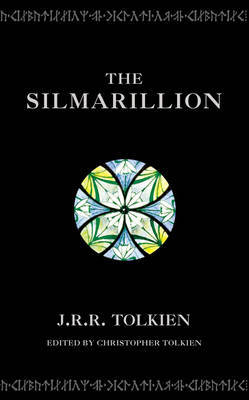 SUMMARY (from Goodreads): The Silmarillion is a gloriously realised story of rebellion, exile, war and the heroism of elves and men. But to gain an insight into the staggering complexity of Tolkien's world, however, the shorter works also included are must-reads. Dealing with the myth of creation, the nature of the Gods, the fall of Númenor and the Rings of Power, they paint a vivid picture not only of Middle Earth but also of the author's soaring imagination.
SUMMARY (from Goodreads): The Silmarillion is a gloriously realised story of rebellion, exile, war and the heroism of elves and men. But to gain an insight into the staggering complexity of Tolkien's world, however, the shorter works also included are must-reads. Dealing with the myth of creation, the nature of the Gods, the fall of Númenor and the Rings of Power, they paint a vivid picture not only of Middle Earth but also of the author's soaring imagination.
MY OPINION:
Despite having read The Silmarillion a few times before in Slovene translation, I have never reviewed it. Therefore, I decided to do so now that I have finally read it in English.
The Silmarillion is often referred to as a prequel to The Lord of the Rings. However, those who expect a similar epic adventure story might be disappointed.
Edited by Christopher Tolkien and published posthumously, it contains Tolkien’s writing about the early ages of the Middle-Earth. Though it is not a thick volume (my edition has just over 360 pages, not counting the nomenclature appendix), its narrative, great and tragic, is full of names and genealogical ties, regional and ‘political’ – in a sense – divisions, which may seem boring, but to me it is fascinating.
The Silmarillion is basically a historical narrative, fictional non-fiction, a book a Gondorean of the Fourth Age would use to study the ancient history or a Tolkien fan to learn more about the numerous references made in The Lord of the Rings: from Morgoth, the first Great Enemy, and the fall of Gondolin to personages such as Lúthien and Finrod.
Finally, as the icing on the cake, this edition contains a part of Tolkien’s letter to his publisher, conveying not only Tolkien’s ideas of his own work and its development but also his general views on fiction and writing.
Thus, with everything mentioned, I can only say I absolutely love The Silmarillion, both for its fictional and meta-fictional value.

RECOMMENDATION: Essentially, The Silmarillion is a history book and a bible at once (after all, The Bible is also a history book in a way) and reads as such; it provides an explanation of the creation of Tolkien's world and an account of the history of the Elves and Men before the time of the Lord of The Rings, and is as such a must-read for a fan of Tolkien’s work.

Interesting. Everyone always talks about the Silmarillion, but they never say what's actually in it. I thought it was a bunch of short stories about Middle Earth. Thanks for the clarification. If I end up liking LotR as I read them, I might take a look.
ReplyDeleteNo, it's quite a concise unit, not a bunch of short stories. Perhaps everyone is so vague in order not to spoil anything, I know for myself that I find it hard how much information to include in a review to be just right but not too much. I'm glad to be of help, and thank you for stopping by and commenting.
DeleteI agree with Jenni, your review explains very well what to expect from the book. I always assumed it was a geography book about Middle earth. I really want to read this one though !
ReplyDeleteThank you, I'm glad my review is of help to you. I hope you do read The Silmarillion, it's worth it.
Delete